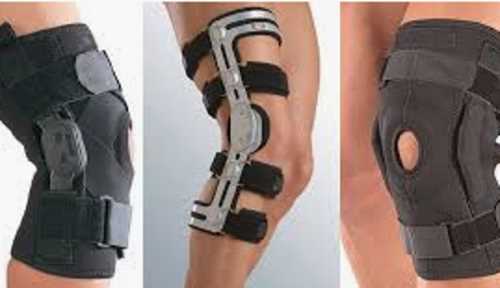Ceramic braces are one of the most popular orthodontic treatment options for those who care not only about the results, but also about aesthetics during treatment. Due to their translucent or white structure, they are less noticeable than their metal counterparts, making them an ideal choice for people seeking a more discreet correction of their teeth. In this article, we will look at the main benefits of ceramic braces, the rules of care and the specifics of treatment with them.
1. Advantages of ceramic braces
One of the main advantages of ceramic braces is their aesthetic appeal. Unlike metal braces, ceramic braces practically blend in with the color of your teeth, making them less noticeable when socializing and smiling.
Aesthetic benefits of ceramic braces
Aesthetic braces are made of a special ceramic material that hardly stands out against the natural color of your teeth. This allows people with braces to feel more confident. That's why эsthetic braces are often chosen by adult patients who want to align their teeth without overtly interfering with their appearance. The advantages of ceramic braces over metal braces are that they provide the same treatment effectiveness but are less noticeable.
Ceramic braces compared to metal braces
While metal braces are considered more durable and can sometimes reduce treatment time, ceramic braces provide a much more aesthetically pleasing look. They can be a bit more fragile and prone to staining, but for most patients, this is compensated for by their invisibility.
Cost of ceramic braces
One factor to consider when choosing ceramic braces is their cost. Ceramic braces usually cost more than their metal counterparts, but many patients find that the extra expense is justified by the aesthetic benefits.
2. Care of ceramic braces
Ceramic braces require special attention and regular care in order for them to maintain their appearance and perform their function effectively. If not properly cared for, they can become stained, which will impair their aesthetic appearance.
How to properly clean ceramic braces
Daily care of ceramic braces includes brushing the teeth and brackets twice a day using a soft toothbrush and a special orthodontic paste. Special attention should be paid to the spaces between the brackets and the teeth, where food residue can accumulate, which can lead to staining and cavities.
Foods to avoid with ceramic braces
To avoid staining ceramic braces, you should limit your intake of foods that can leave stains. Such products include coffee, tea, red wine, berries and tomato sauces. It is recommended to consume them in minimal quantities and rinse your mouth thoroughly with water or brush your teeth immediately after eating.
Prevention of staining of ceramic braces
One of the main ways to prevent staining is to properly care for your ceramic braces, including regular cleaning, mouthwash and interdental brushes. You can also ask your orthodontist for care recommendations to avoid discoloration of your braces.
3. Duration of treatment with ceramic braces
Treatment time with ceramic braces may vary depending on the complexity of the case and the requirements of the patient. In general, the duration of treatment with ceramic braces is similar to treatment with metal braces.
Ceramic braces wear time
The average wear time for ceramic braces ranges from 18 to 24 months, but this can vary depending on individual differences. The average duration of treatment with ceramic braces may be slightly longer compared to metal braces because ceramic systems are less resistant to stress, requiring a more cautious approach to correction.
Possible problems during treatment with ceramic braces
Because of their fragility, ceramic braces can be prone to breakage, especially if not properly maintained. Also, due to the longer treatment time, patients should be prepared to have to make regular visits to the orthodontist for adjustments to the system. However, these potential problems with ceramic braces can usually be resolved by timely visits to the specialist and following the care recommendations.
When it is better to choose ceramic braces for treatment
Ceramic braces are recommended when the aesthetics of the treatment are important. They are ideal for adult patients who do not want the braces to be noticeable, but still want quality results. Why choose ceramic braces? They provide effective treatment without compromising the patient's appearance.
Ceramic braces are a great choice for those who want to align their teeth and maintain the aesthetics of their smile. They provide the same results as metal braces, but look much more attractive. Aesthetic bracesWith proper care, ceramic braces remain unnoticeable and the duration of treatment with ceramic braces depends on individual characteristics. The main thing is to carefully monitor the cleanliness and condition of the braces to avoid staining and damage.
It is hard to imagine a successful person without a bright, charming smile for millions. Healthy, beautiful, snow-white teeth are not only important for external appearance, but also for articulation, correct pronunciation, good work of the digestive system. But only such an asset, with birth was not given to everyone. Now, dentists to correct various dental defects in children and adults offer braces: ceramic, metal, sapphire. 32Dent is the best clinic that performs teeth alignment with ceramic braces for children and adults.

Ceramic braces
Like any other, ceramic briquettes are composed of:
- A base that consists of brackets made of ceramic that are connected to each other. Each bracket is glued to the tooth separately (using orthopedic adhesive), and only then joined together.
- The wings are the protruding part of the brace. Each wing has a groove for the arch that connects the plates. The wings are attached to the brackets previously fixed on the teeth.
- A metal wire, a kind of arc that binds the whole structure together. It is threaded through the wings and all the plates are connected. Regardless of the material, ceramic, iron, plastic or sapphire, the arcs will be the same.
- The final detail is the ligatures. These are rings of rubber, plastic or metal attached to the wings. They serve to prevent the arch from falling out. There are special ligatureless ceramic braces, which use special clips. Both types, have their advantages and disadvantages.
Two types of ceramics are used for manufacturing: polycrystalline and monocrystalline. They have the same strength and durability. They differ slightly in color: monocrystal is matte, polycrystal is more transparent. The color of ceramics in the clinic 32Dent can be matched to any color of teeth, but usually patients prefer to order a shade slightly lighter. This gives a whitening effect without additional procedures.






